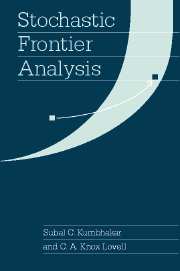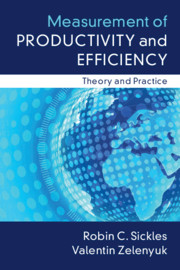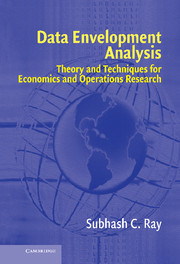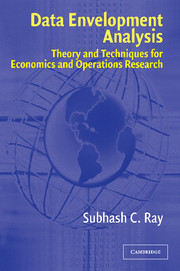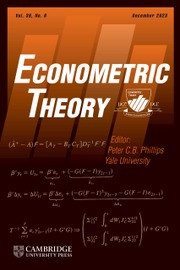A Practitioner's Guide to Stochastic Frontier Analysis Using Stata
A Practitioner's Guide to Stochastic Frontier Analysis Using Stata provides practitioners in academia and industry with a step-by-step guide on how to conduct efficiency analysis using the stochastic frontier approach. The authors explain in detail how to estimate production, cost, and profit efficiency and introduce the basic theory of each model in an accessible way, using empirical examples that demonstrate the interpretation and application of models. This book also provides computer code, allowing users to apply the models in their own work, and incorporates the most recent stochastic frontier models developed in academic literature. Such recent developments include models of heteroscedasticity and exogenous determinants of inefficiency, scaling models, panel models with time-varying inefficiency, growth models, and panel models that separate firm effects and persistent and transient inefficiency. Immensely helpful to applied researchers, this book bridges the chasm between theory and practice, expanding the range of applications in which production frontier analysis may be implemented.
- Provides stand-alone reference material for the reader to gain the practical understanding of estimating production, profit and cost efficiency
- Includes a theoretical explanation of the stochastic frontier model interwoven with worked examples of applying the theory to real data
- Provides tools to apply models to real data by creating a series of programs written for use in Stata
Reviews & endorsements
'A competent empirical application of Stochastic Frontier Analysis (SFA) requires a clear understanding of both the production economics and the econometric theory behind the specified model side by side with adequate programming skills to write the necessary software codes. Apart from a clear exposition of the economic theory behind various stochastic frontier models that represent the technology (like the Distance Functions) and/or producer behavior (like the Cost or Profit Functions) and the relevant econometric theory, the authors offer detailed instructions on how to write the commands for various models in Stata and explain how to interpret the results. This book will prove to be invaluable for every serious researcher using SFA to measure production efficiency.' Subhash C. Ray, University of Connecticut
'This book is a significant contribution to an applied introduction to stochastic frontier analysis. The authors explain clearly many of the models used in efficiency estimation, which has become a standard tool in the arsenal of applied economics. They explain clearly the models and the assumptions and provide a thorough introduction to estimating performance and efficiency for the practitioner. The many scientific fields in which efficiency and performance measurement are important will benefit immensely from the book not only because of its clarity and concreteness but also because the models are taken directly to practice using Stata, standard software used by many researchers. The combination of theory and practical application is masterfully done in this book, and practitioners in a vast number of fields will find it indispensable for their research.' Mike G. Tsionas, Athens University of Economics and Business
Product details
February 2015Hardback
9781107029514
374 pages
254 × 178 × 22 mm
0.87kg
56 b/w illus.
Available
Table of Contents
- 1. Introduction
- 2. Production, distance, cost, and profit functions
- 3. Production frontier models
- 4. Cost frontier models
- 5. Profit frontier models
- 6. Cost system models
- 7. Profit system models
- 8. Primal cost models
- 9. Profit primal models
- 10. Panel models
- 11. Productivity and profitability
- 12. Looking ahead.


